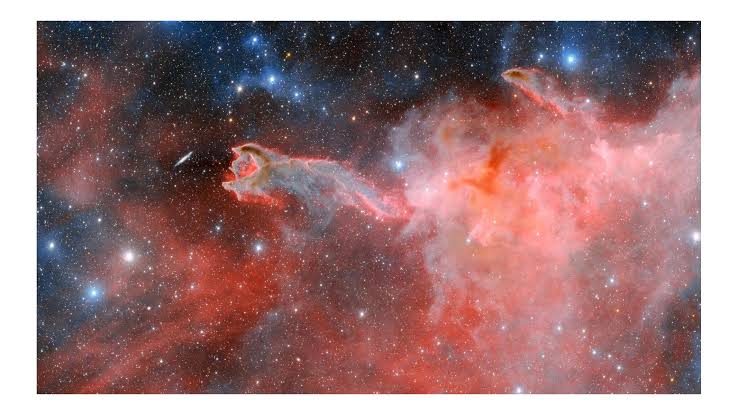A new telescope in Chile has captured an awe-inspiring image dubbed “God’s Hand,” revealing CG 4, a cometary globule located 1,300 light-years away. This structure, resembling a hand, is formed by dense clouds of gas and dust, with an eight-light-year tail. The image, captured by the Dark Energy Camera (DECam), showcases the star-forming activity within the Gum Nebula, providing valuable insights into the mysteries of star formation and nebular dynamics.
Astronomers have long sought to unravel the mysteries of the cosmos, and the latest breakthrough comes from a telescope in Chile, which captured an image dubbed “God’s Hand.” CG 4, officially known as a cometary globule, is located approximately 1,300 light-years away in the constellation Puppis.
The Dark Energy Camera (DECam), mounted on the Victor M. Blanco 4-meter Telescope at the Cerro Tololo Inter-American Observatory, captured this breathtaking image. It reveals a ghostly hand-like structure extending across the Milky Way, formed by dense clouds of gas and dust.
Cometary globules like CG 4 are intriguing astronomical objects, surrounded by hot, ionized material despite having no connection to comets. The tail of CG 4 stretches for about eight light-years, with the “hand” itself measuring 1.5 light-years across.
The formation of cometary globules remains a subject of debate among scientists, but images like the one captured by DECam are crucial for understanding these enigmatic structures. Equipped with a Hydrogen-alpha filter, DECam can image ionized hydrogen, cutting through cosmic dust to reveal delicate formations.
The “Hand of God” captured by DECam is not only visually stunning but also scientifically significant. Located within the Gum Nebula, an emission nebula nearly 1,400 light-years away, it is part of a larger complex teeming with star-forming activity.
The Gum Nebula serves as the backdrop for “God’s Hand,” extending about 35° and believed to be the remnant of an ancient supernova. Within this expansive nebula, CG 4 is just one of many structures shaped by intense radiation from nearby massive stars.
The DECam’s image of “God’s Hand” provides valuable insights into star formation and nebular dynamics, contributing to our understanding of the lifecycle of stars within the Gum Nebula.




